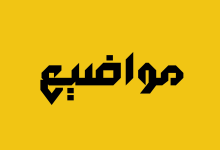Certainly! 🇮🇷 Iran is a country known for its rich history, culture, and stunning tourist destinations. Here are some of the top places to visit in Iran:
-
Isfahan: Known as “Half of the World,” Isfahan boasts breathtaking Islamic architecture. The Imam Square, Sheikh Lotfollah Mosque, and the historic bazaar are must-visit spots.
-
Shiraz: Home to the famous Persepolis, an ancient city of the Persian Empire. You can also visit the beautiful Nasir al-Mulk Mosque, known as the “Pink Mosque” due to its stunning stained glass windows.
-
Tehran: The capital city offers a blend of modern and historical attractions. The Golestan Palace, Azadi Tower, and the National Museum are among the highlights.
-
Persepolis: An ancient city, now in ruins, that was once the capital of the Achaemenid Empire. It’s a UNESCO World Heritage Site and a window into Iran’s ancient past.
-
Esfahan Province: Explore the scenic landscapes of Abyaneh village and the desert oasis of Varzaneh. Don’t miss the beautiful Khaju Bridge.
-
Yazd: Known for its well-preserved Zoroastrian heritage and unique wind towers. The Jameh Mosque and the historic old town are worth exploring.
-
Kerman: A city with a rich cultural heritage, home to the Ganjali Khan Complex, including a bathhouse, square, and caravanserai.
-
Kashan: Famous for its traditional Persian architecture, visit the Fin Garden, Tabatabaei House, and Agha Bozorg Mosque.
-
Mashhad: A significant religious destination, known for the Imam Reza Shrine, one of the most important pilgrimage sites for Shia Muslims.
-
Gilan Province: If you love nature, visit the lush green landscapes of Gilan. The Masuleh village is famous for its unique architecture and beautiful scenery.
These are just a few of the many incredible places to explore in Iran. The country’s diverse culture, historical sites, and natural beauty make it a fantastic destination for travelers. 🌍✈️🌄
المزيد من المعلومات

Certainly! Here are some key facts and figures about Iran:
👥 Population: Approximately 84 million people (as of my last knowledge update in January 2022).
🌍 Area: Iran covers an area of about 1,648,195 square kilometers, making it the 17th largest country in the world.
💰 Currency: The official currency of Iran is the Iranian Rial (IRR).
🏛️ Governance: Iran is an Islamic Republic with a unique system of governance. It has both elected and unelected bodies. The Supreme Leader is the highest authority, and there is an elected president and parliament. The country’s political structure combines theocracy with elements of a republican system.
Please note that these figures may have changed since my last knowledge update, so it’s a good idea to verify the latest statistics from a reliable source for the most up-to-date information. 📊🇮🇷
Certainly! Here’s more information about Iran’s national holidays and observances, geography, climate, and religion:
🎉 National Holidays and Observances:
- Nowruz: The Persian New Year, celebrated on the vernal equinox (usually March 20 or 21). It’s the most significant and widely celebrated holiday in Iran.
- Islamic Holidays: Iran observes various Islamic holidays, including Eid al-Fitr (celebrating the end of Ramadan) and Eid al-Adha (Festival of Sacrifice).
- Revolution Day: Celebrated on February 11th, marking the anniversary of the Islamic Revolution in 1979.
🌍 Geography:
- Terrain: Iran’s landscape is diverse, ranging from deserts in the central plateau to mountains in the north and west. The Zagros Mountains and Alborz Mountains are prominent features.
- Caspian Sea: Iran’s northern border is along the Caspian Sea, which is the largest enclosed inland body of water in the world.
🌦 Climate:
- Iran experiences a variety of climates due to its size and topography. The Caspian region has a humid subtropical climate, while central Iran is arid with hot summers and cold winters. Southern coastal areas have a hot and humid climate.
🕌 Religion:
- The dominant religion in Iran is Twelver Ja’fari Shia Islam. It is the state religion, and a significant majority of Iranians practice it. There are also religious minorities, including Sunni Muslims, Christians, Jews, Zoroastrians, and Baha’is.
These factors, combined with the information provided earlier, give a comprehensive picture of Iran’s cultural, geographical, and religious aspects. 🌏🕌🎇
معلومات إضافية

Of course! Here’s a brief overview of Iran’s climate, heritage, cultures, popular cuisines, national anthem, and time zone difference (GMT):
🌦 Climate: Iran’s climate varies due to its vast size and diverse geography. In general, it experiences a mix of arid, semi-arid, and subtropical climates. The northern regions have a more moderate, subtropical climate, while the central and eastern parts are often arid with hot summers. The southwest has a Persian Gulf climate, and the northwest experiences a continental climate with cold winters.
🏛️ Heritage: Iran has a rich historical and cultural heritage dating back thousands of years. It was a cradle of several ancient civilizations, including Elam, Achaemenid, Parthian, and Sassanid. The country is known for its magnificent architecture, including mosques, palaces, and ancient ruins like Persepolis. Persian rugs and calligraphy are also significant aspects of Iranian heritage.
🌍 Cultures: Iran is a multi-ethnic country with a diverse cultural tapestry. Persian culture is the most dominant, but there are also distinct cultures among various ethnic groups, such as Azeris, Kurds, Arabs, and Baluchis. Iranian culture is known for its art, poetry, literature, and hospitality.
🍽️ Popular Cuisines: Iranian cuisine is a delight for food lovers. Dishes often feature rice, lamb, chicken, and a variety of herbs and spices. Some popular dishes include Chelo Kebab, Ghormeh Sabzi, and Zereshk Polo. Persian sweets like Baklava and Gaz are also famous.
🎵 National Anthem: Iran’s national anthem is known as “Sorood-e Melli-e Jomhouri-e Eslami-e Iran.” The lyrics are written by Houshang Seyhoun, and the music is composed by Hassan Riyahi.
🕰️ Time Zone: Iran Standard Time (IRST) is 3 hours and 30 minutes ahead of Greenwich Mean Time (GMT+3:30). Iran does not observe Daylight Saving Time.
These elements are just a glimpse of the rich and diverse aspects of Iran’s culture, history, and daily life. 🇮🇷🎶🍲
